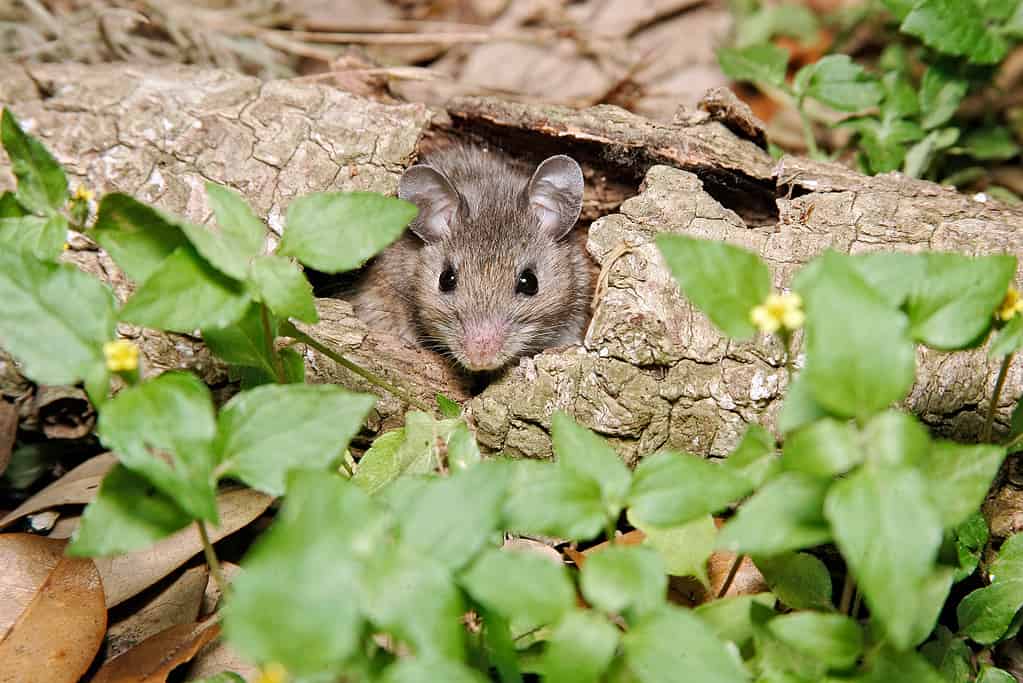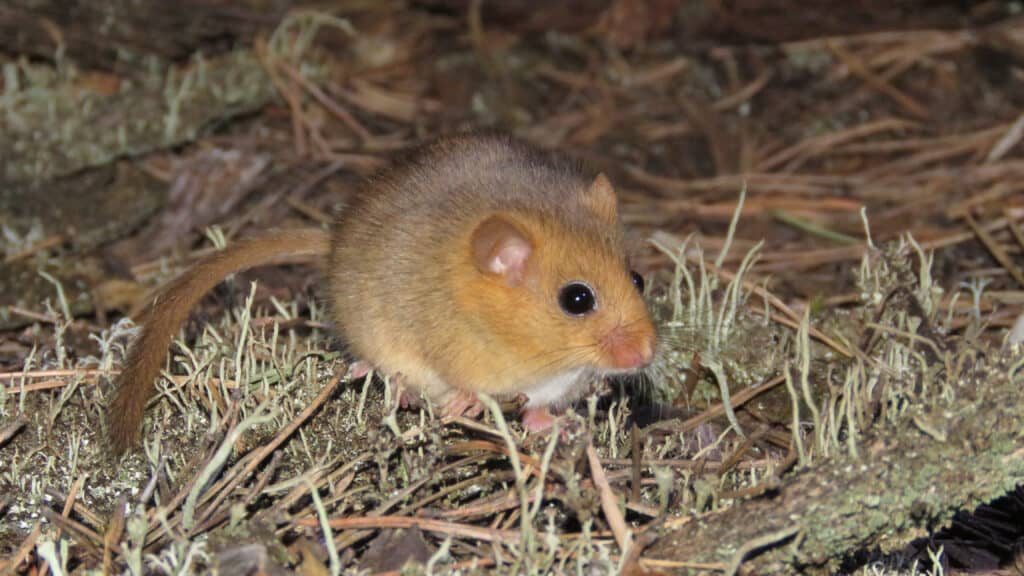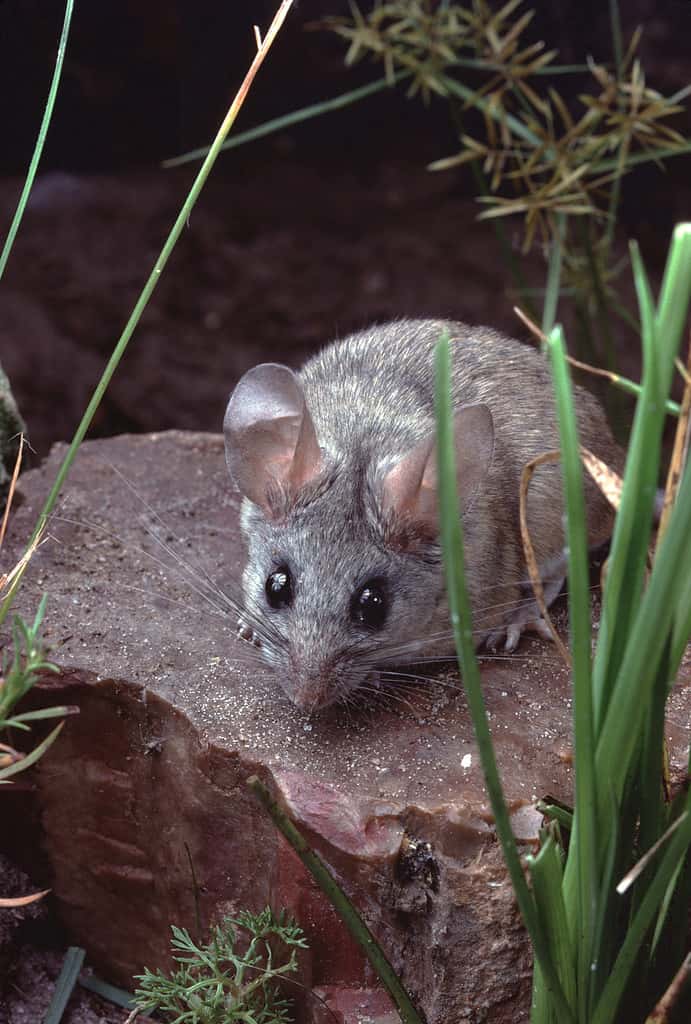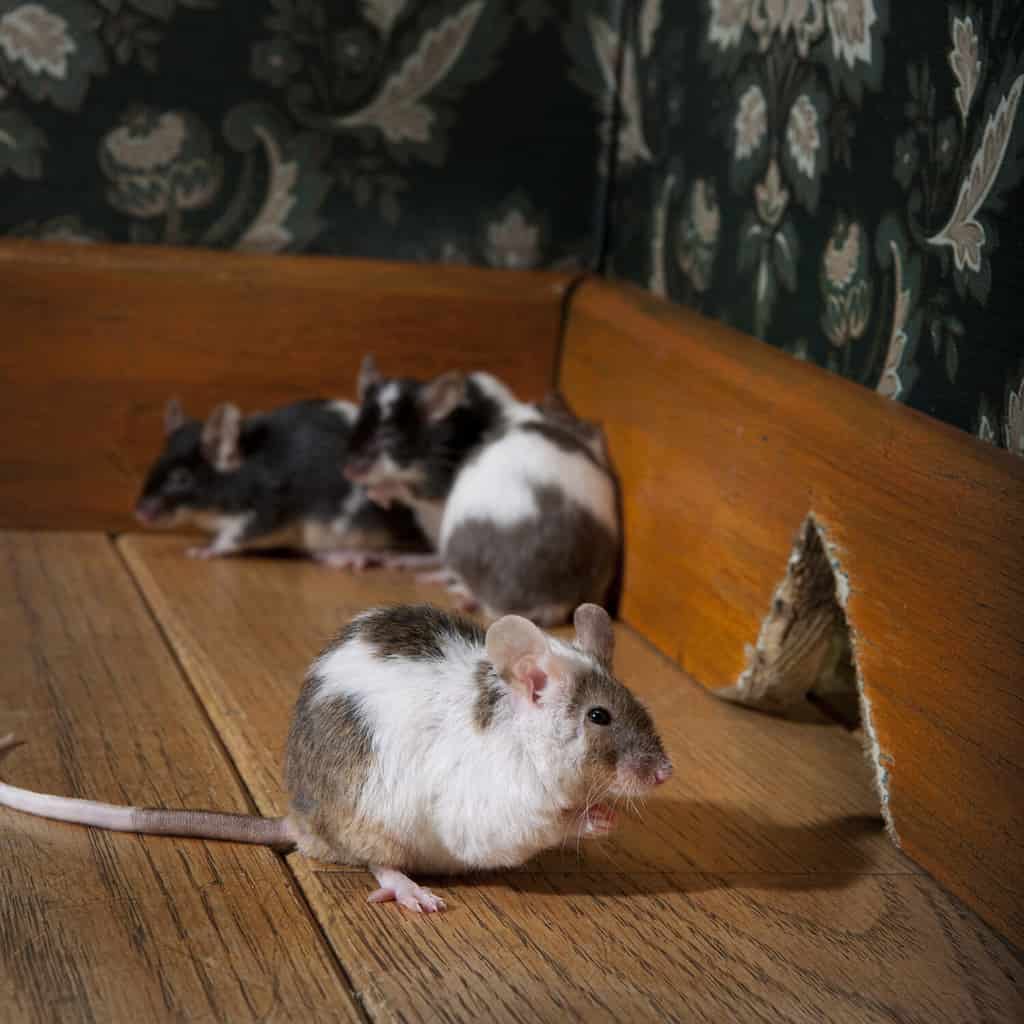Mice are found everywhere in the United States and virtually everywhere globally. Most people are used to looking for mouse nests inside, but the fact is that most mice live outdoors. So, where do mice nest outside? Read on to find out where they live, what they use to build their nests, and which U.S. states have the most mice. Also, find out how to prevent mice from nesting inside your home.
Where Do Mice Nest Outside?
Mice choose outdoor nests based on the availability of food, protection from predators, and suitable materials. Most importantly, they seek warm, dry locations that will enable them to raise their young in relative safety.
Location

Mice nest in several outside locations, including fields, woods, and wood or rock piles.
©iStock.com/KeithSzafranski
Mice nest as close to a food source as possible, typically within 30 feet. If the food source remains and predators aren’t a problem, they have no reason to leave. Common outdoor locations for mouse nests include the following:
- Fields
- Woods
- Edges of farmland
- Exteriors of houses
- Shrubbery
- Tall grasses
- Dense underbrush
- Burrows
- Ditches
- Wood piles
- Rock piles
Materials

Mice build their nests from everyday materials like grass, straw, twigs, and household items.
©Oleksiy Sapuha/Shutterstock.com
Nest materials are chosen for their ability to conserve heat and provide a suitable environment for raising vulnerable young. Mice construct their nests out of the following common materials:
- Grass and other types of vegetation
- Twigs
- Straw
- Paper (e.g., newspaper)
- Cardboard
- Fabric
- String
- Insulation
- Mattress batting
- Pillow batting
This is not an exhaustive list; mice will use whatever suitable materials are at hand to build their nests. Most mouse nests are four to six inches long and form a rough ball with an exit hole.
When Are Mice Most Active?

Mice are most active at night, though they occasionally come out during the day.
©Liz Weber/Shutterstock.com
Mice are primarily nocturnal creatures, which means they prefer to be active between dusk and dawn rather than in the daytime. This is true both for house mice and mice that live outdoors. However, mice can technically be active at any time. A house with a large mouse infestation may see more diurnal activity than usual.
Mice are more active at night because they dislike bright lights and are wary of other creatures. Moving around during the quieter nighttime hours makes them feel more secure. Mice will escape their daytime hiding places if they sense food nearby.
In terms of seasonal activity, mice do not hibernate during the winter. On the contrary, the colder months are an active time for them as their dwindling food hoards force them to forage. Homeowners are also more likely to notice mice in their houses in the fall and winter as these tiny rodents seek protection from the cold. Mice that live outdoors spend their time foraging for food and avoiding predators year-round.
The U.S. States with the Most Mice

Mouse infestations are common in California, New York, and Pennsylvania.
©Eric Isselee/Shutterstock.com
Every U.S. state has its fair share of mice, but some have more than others. The following states rank high on the list in terms of mouse and other rodent infestations:
- California: California is packed with people and mice, which is a typical correlation. The cities of Los Angeles, San Francisco, and Sacramento see the worst of it.
- New York: Perhaps unsurprisingly, New York has a significant mouse problem. The cities of New York and Albany are worse off than any other.
- Pennsylvania: Another state with big cities and big mouse populations is Pennsylvania. In particular, the cities of Philadelphia, Pittsburgh, and Harrisburg suffer from mouse infestations.
- Texas: Texas is another state that suffers from an overabundance of mice. If you live in Dallas-Fort Worth, Houston, San Antonio, or Austin, you’ll want to watch for rodents.
- Illinois: In the state of Illinois, Chicago is the city with the biggest mouse problem.
- Florida: Sunny Florida has a downside: rodents. Tampa, Orlando, Miami, West Palm Beach, Jacksonville, and Fort Myers all struggle with a rodent problem.
- Ohio: Both Cincinnati and Columbus, Ohio have their fair share of mice.
- Tennessee: Tennessee is another state with significant cities and therefore a considerable rodent problem. The most infested cities are Memphis, Nashville, and Chattanooga.
- Alabama: The state of Alabama has a big mouse population. The most affected cities are Birmingham and Mobile.
How to Stop Mice from Coming Inside

Certain scents like peppermint and clove deter mice from coming inside.
©botamochi/iStock via Getty Images
Many outdoor mice decide to venture inside when the weather turns cold. Here are a few things homeowners can do to prevent a mouse infestation:
- Close up any gaps or openings in windows, doors, or walls: Mice are experts at getting through tight openings. The average mouse can squeeze itself through a gap of about ¼-inch (6-7 millimeters).
- Eliminate easily accessible food sources: Food attracts mice like nothing else. If they can’t find a steady food source, chances are they’ll move on.
- Eliminate common hiding places in the yard and house: Keep the yard trimmed and maintained to remove potential nesting spots.
- Use deterrents like essential oils: Certain scents like peppermint and clove are known to repel mice. Plants like marigold and lavender also serve the same function.
- Use traps: Lethal or nonlethal traps are a good way to get rid of mice around the house.
The photo featured at the top of this post is © Adrian Eugen Ciobaniuc/Shutterstock.com
Thank you for reading! Have some feedback for us? Contact the AZ Animals editorial team.







